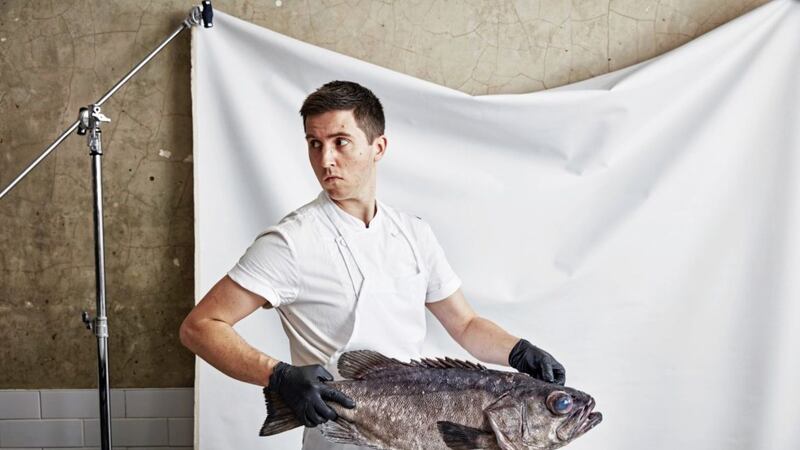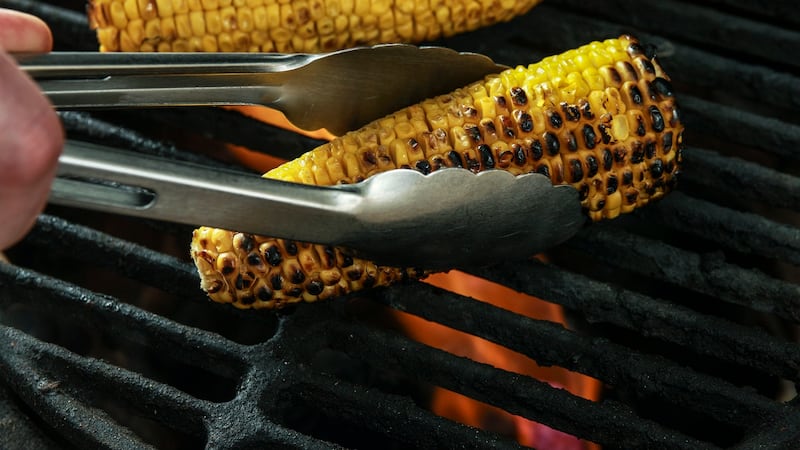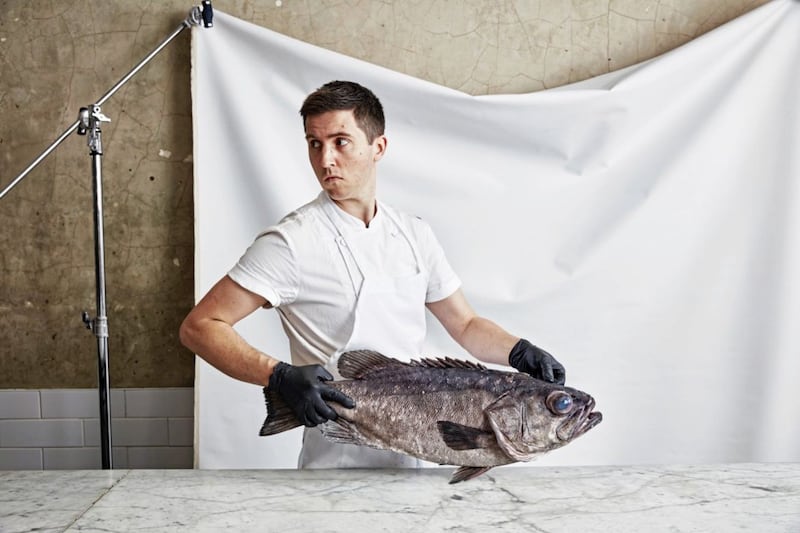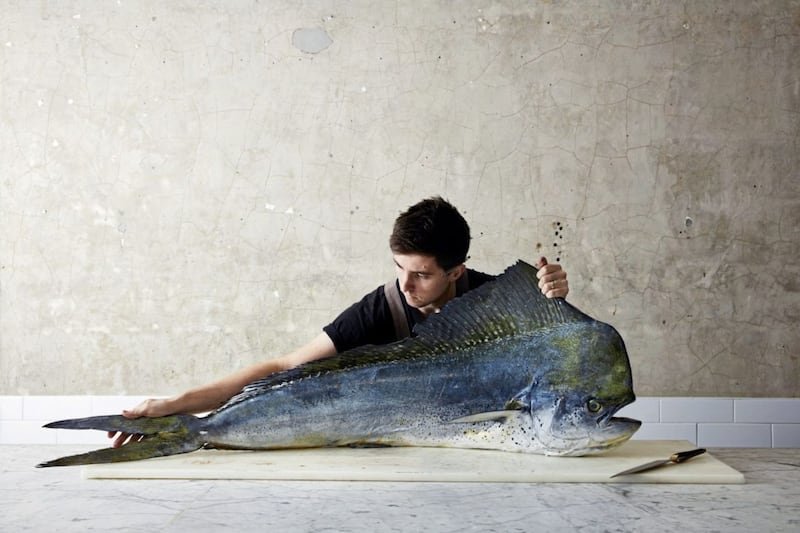CHEF Josh Niland can be brilliantly blunt. “If you write a vanilla cookbook that just puts another fillet on top of another vegetable, I think I’ll go crazy,” he says over Zoom from Sydney, Australia. “It’s so boring, the way we continue to see fish.”
The restaurateur and fish butcher is doggedly trying to revolutionise the fish business, has developed a whole new fin-to-gill ethos to keep us eating fish in a sustainable way – one that doesn’t decimate the oceanic ecosystem – and isn’t afraid to make statements like: “It’s no longer acceptable to be serving AUS$12 (£7) fish and chips at a local fish and chipper.”
He set out his stall in his hugely successful debut, The Whole Fish Cookbook, for which Niland won two prestigious James Beard Awards and sold a whopping 100,000 copies. In it, he outlined fish butchery as an opportunity to make the most of every fish we buy, cook and eat. Sydney is back in lockdown when we speak, so Niland’s restaurant, Saint Peter, has had to quickly re-pivot to at home dining (again), but he’s found that the hike in home cooking has ramped up wider interest in fish butchery.
“For a lot of people using a fish shop, there’s never really much vocabulary beyond, ‘I’ll have that one’, or, ‘What would you want to eat?’” says New South Wales-born Niland, but encouragingly he’s had people increasingly “asking us to do certain tasks for them, which is what I’ve always had the great desire of fish butchery being; a service in line with meat butchery.”
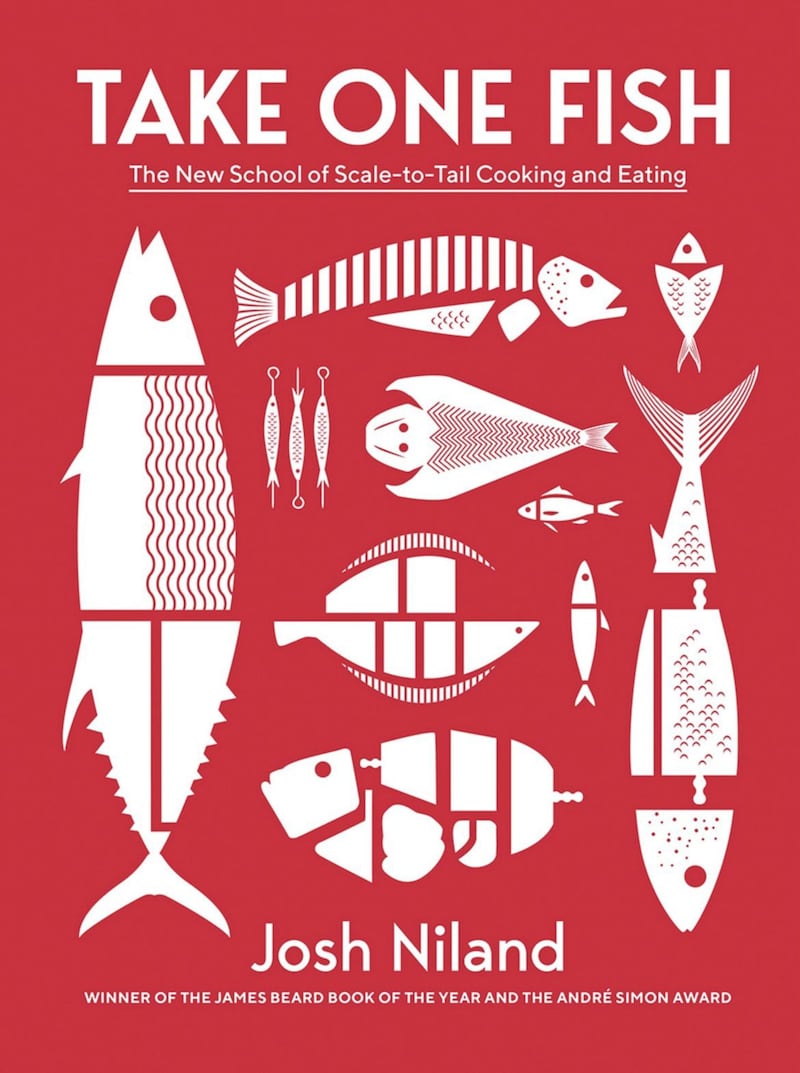
Now his new cookbook, Take One Fish, demonstrates the benefits of fish butchery for home cooks, and for seeing every fish as more than its fillets. He considers the potential of 15 diverse fish species and looks at the maths: “If I can generate the yield of two fish from one single fish, that means one less fish gets taken out of the water.”
Niland calls the book “an indirect message of sustainability and making better decisions” – done in a way that’s as “provocative and humorous” as possible, hence the witty, graphic photography, bold tone and galvanising recipes.
It’s a step on from The Whole Fish Cookbook, which Niland admits is “quite exhaustive”, while recipes for fish offal and charcuterie were a little daunting. “Every page is quite a bomb,” says Niland wryly. With Take One Fish, he hopes to “offer tangible solutions for a protein” that is quite difficult to a lot of people.
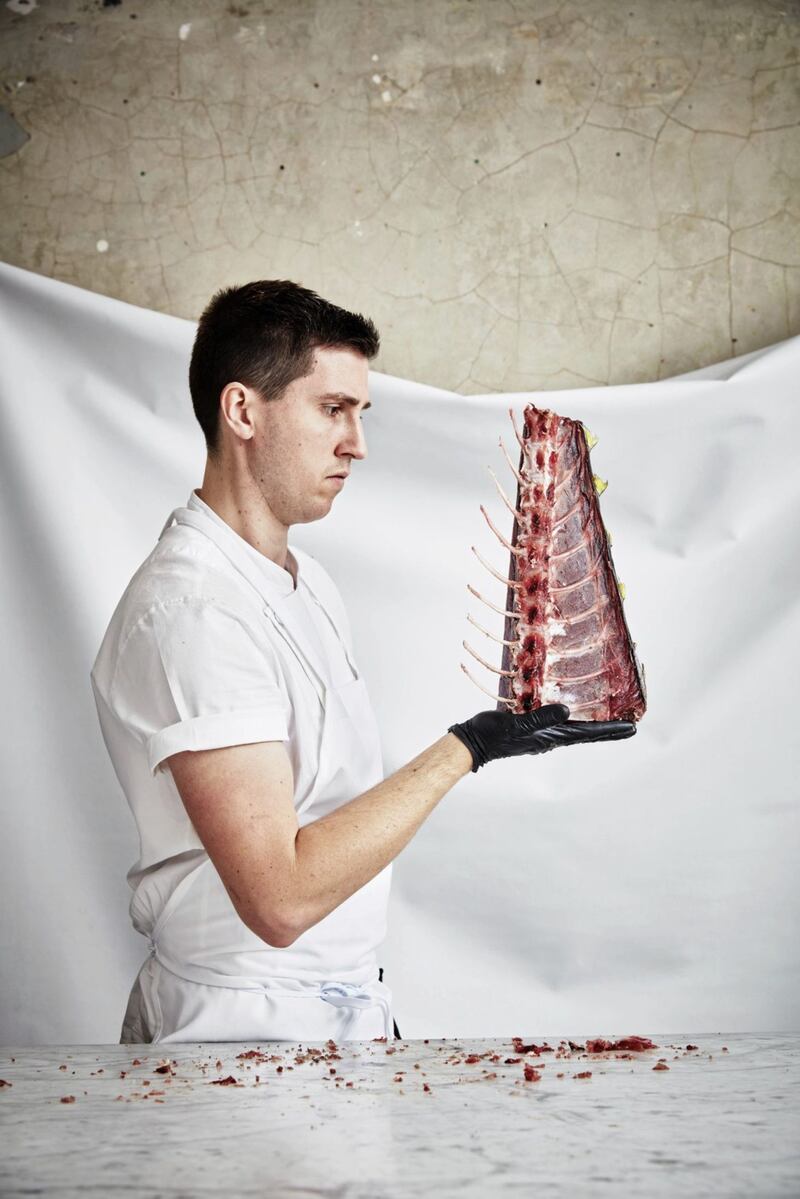
There’s a big, crumbed swordfish cutlet “that wouldn’t be out of place on a pub menu anywhere in the UK”, and tuna mince made using the less desirable cuts, beyond the loin. “What’s happening to the rest of that fish? What’s happening to that big heavy red muscle that sits on the side, which people usually refer to as the bloodline? What’s happening to that really sinewy piece of chain that sits on the other side of the fish?” says Niland, mildly outraged. “To me, coming up with a solution in the form of a tuna mince was really exciting and very obvious.
“All of a sudden we’ve got lasagne, koftas, mapo tofu,” he adds. “It’s a wonderful way to introduce children experiencing fish for the first time.”
He reckons the tuna chapter in particular will really resonate and “bring more comfort to the idea of cooking fish”. It’s once we find that “deep comfort” and separate fish from ideas of icky-ness and smelliness and accept it into our routine like we do meat, that things will begin to change, he believes.
And change is absolutely necessary. “Every month that goes by, it becomes more and more of an issue,” says Niland, of the environmental crisis and the fish industry’s place within it. From a culinary perspective, he says “the message I’m trying to project is, where we live in a privileged country, like Australia, the UK, and the US, where we have the privilege of choice, where we can make decisions around the food we want to eat, then we need to be making better decisions.”
Over a billion people rely on fish and seafood as their main source of protein, and so some solutions, like what’s offered by Netflix documentary Seaspiracy – don’t eat fish – “really isn’t on the table for a lot of parts of the world”.
Niland’s fish butchery tack shifts the conversation and uses every aspect of fish in a way that does attract Western audiences, who likely “wouldn’t sit down to a bowl of eyeballs nor fish sperm”. For example, his decadent custard tart with sardine garum caramel. “You’ve got to keep pushing buttons, otherwise nobody pays attention,” says Niland with a grin. And once he explains that he’s drawing on Thai cooking, where fish sauce is regularly used to offset bitterness of caramel, the tart doesn’t sound remotely outlandish. “I try to join the dots and thread the needle to help people understand how I got to that outcome,” says Niland. “But ultimately, I just want to prod and poke people.”
He highlights the genius and determination of chef and restaurateur Fergus Henderson, a pioneer of the modern-day nose-to-tail movement, who in 25 years has popularised beef cheeks, oxtail and pigs’ ears, often over the primary cuts of the animals they’re from. Niland is determined to do the same for fish. “I feel that I’m at the beginning of a journey that I feel is going to take a very long time,” he admits, not naïve about the task ahead. “But [it’s a conversation] I feel is extremely necessary, if we’re going to see about doing any kind of real change that can help the oceans.”
He says “archaic ideas” that fish has a shelf life of three to four days, that the only way to clean it is by washing it under a tap, or that only the fillet is desirable, “need immediate attention”. And, Niland adds without ego, “the only attention it’s being given right now in the world is my two books.”
So, if you want to keep eating fish and “work with this extremely precious product that we have on this planet”, you know what to do.
Take One Fish: The New School Of Scale-to-Tail Cooking And Eating by Josh Niland is published by Hardie Grant, priced £26. Photography by Rob Palmer. Available now. Below are three recipes for you to try at home...
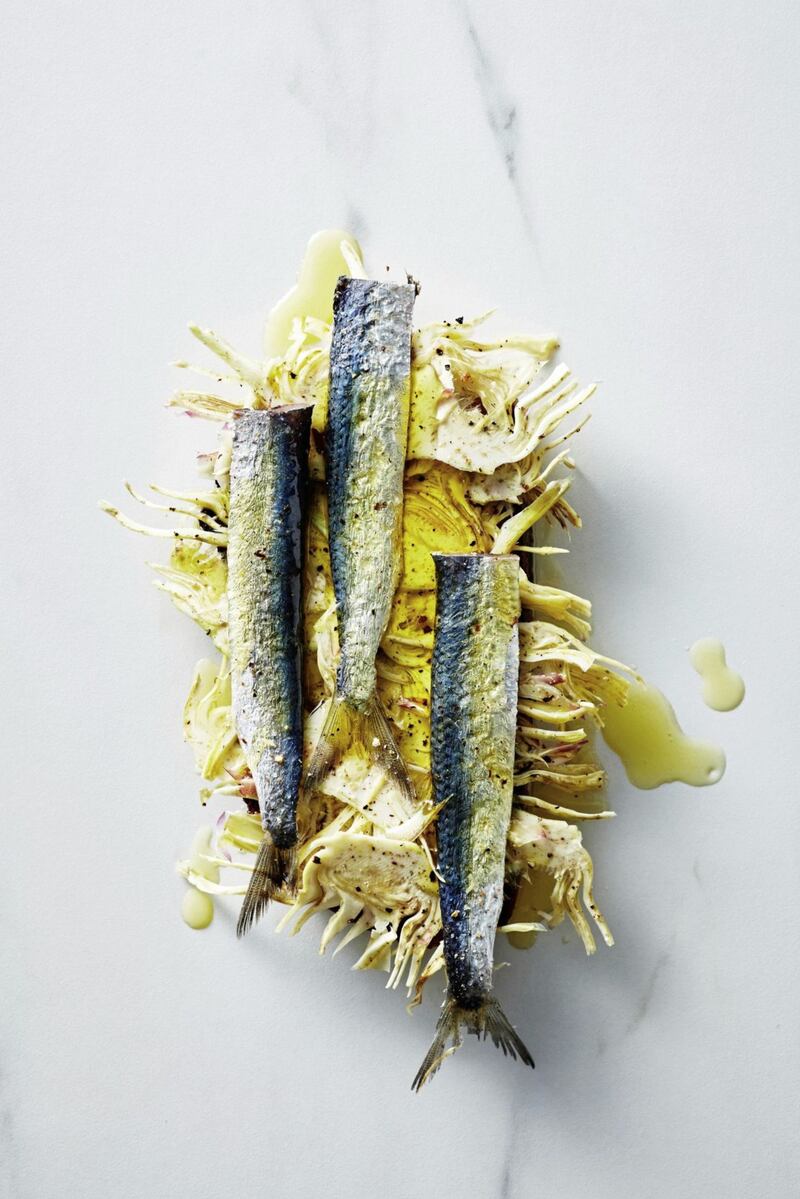
SALTED SARDINE FILLETS AND GLOBE ARTICHOKES ON GRILLED BREAD
(Serves 2, with leftover sardines for next time)
1kg (2lb oz) fresh whole sardines
2kg (4lb 6oz) best-quality rock salt
Chilled water, for soaking about 500 ml (17fl oz or 2 cups)
Extra-virgin olive oil
To assemble:
2 slices of quality sourdough bread
70 ml (2¼ fl oz) extra-virgin olive oil
1 garlic clove, peeled and halved
6 baby globe artichokes, tough outer leaves and woody stems removed
Zest and juice of 1 lemon
Freshly cracked black pepper
Method:
1. To salt the sardines, first carefully scale the fish with a spoon. Using a sharp knife, make a cut behind the head on both sides running adjacent to the sardine’s collars, then remove the head by twisting and gently pulling it off – the organs will follow in one piece. Instead of throwing away this part of the fish, remove the gills and gall bladder from the head and organs and make your own garum (fish sauce), or use shop bought.
2. Place a layer of rock salt in the bottom of a non-reactive sterile storage container. Add a layer of sardines, then another layer of rock salt, followed by more sardines. Continue layering until you have used up all of the sardines, finishing with a layer of salt, making sure it completely covers all of the fish.
3. Close the lid of your container and place it in the coldest part of your fridge for about two weeks. After that time, the sardines will be cured and the flesh will have a darker complexion. Leaving the sardines for a longer period of time, up to a month, will impart a more rounded, savoury flavour profile.
4. To prepare the sardines for serving, if you are right-handed, start with the sardine’s head end on your left, tail to the right and the backbone facing you. Make a clean cut down the frame of the fish, removing the fillet intact in one movement of the knife from head to tail. Repeat on the other side. Follow these instructions in reverse if you are left-handed. (The sardines do not require pin-boning, but it is important to cut the rib bones out using a small knife as they are fairly unpalatable.)
5. Taste the salted fillets – you will find they are unbelievably salty to the point of seeming inedible. Pour some chilled water into a small bowl and add the sardine fillets to remove some of the intensity from the cure. Taste every 15 minutes until you reach the level of seasoning you like. At this point, transfer the fillets to a piece of paper towel or a cloth, and carefully pat them dry.
Lay these beautiful fillets in a container and cover with extra-virgin olive oil. They are now ready to consume, or store in the fridge for up to two months.
6. When you are ready to prepare the toast, either preheat a grill pan over a medium–high heat or a charcoal grill with evenly burnt-down embers. Brush the bread with olive oil and grill for one minute each side or until charred. Rub a single garlic clove over the hot toast to expel its natural oils and aroma.
7. Using a sharp mandoline, thinly shave the globe artichokes into wafers over the hot toast. Working quickly so you can enjoy the toast nice and hot, position six salted sardine fillets on each slice of toast over the shaved artichoke. Add a few gratings of lemon zest, a squeeze of lemon juice, some extra-virgin olive oil and lots of pepper. Cut the toast to share immediately.
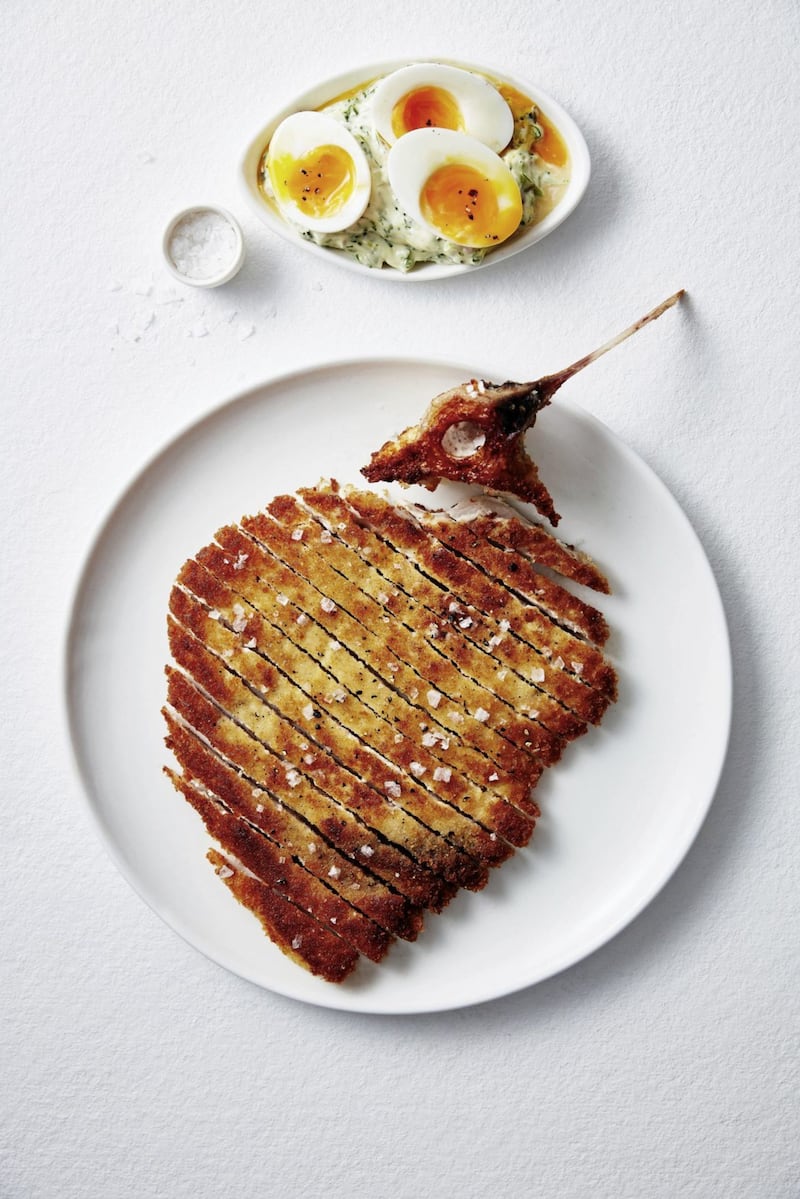
SWORDFISH SCHNITZEL AND EGG SALAD
(Serves 2)
2 × 250g (9 oz) swordfish cutlets, bone in
250 ml (8½ fl oz or 1 cup) full-cream/whole milk
1 large egg
Sea salt flakes and freshly cracked black pepper
250g (9 oz or 1 2/3 cups) plain flour
180g (6½ oz or 3 cups) white panko breadcrumbs
160g (5½ oz) ghee
For the egg salad:
4 soft-boiled eggs, cooled and peeled
100g (3½ oz) freshly made or best-quality mayonnaise
1tbsp Dijon mustard
1½tbsp finely diced red onion
1½tbsp finely diced
Celery heart
1tbsp tiny salted capers, rinsed and drained
1 bunch chives, finely chopped
Pinch of cayenne pepper
Sea salt flakes and freshly cracked black pepper
Method:
1. Place each swordfish cutlet between two sheets of baking paper and beat with a meat mallet to an even thickness of approximately 2–3mm.
2. Place the milk and egg in a shallow bowl, season with salt and whisk to combine. Tip the flour and breadcrumbs onto separate flat baking trays or dinner plates.
3. Dip the swordfish first into the flour and tap away any excess, then dip it into the egg mixture, allowing the excess to drip away. Lastly, coat with the breadcrumbs, pushing down firmly so the breadcrumbs stick evenly from edge to edge.
4. Melt half the ghee in a large cast-iron frying pan over a medium heat. Add one cutlet and cook for four minutes, keeping the pan moving to swirl the fish around in the hot fat and turning it over halfway through cooking, until golden and evenly coloured on both sides. Season liberally with salt and pepper, then transfer to a plate lined with paper towel to rest. Repeat with the remaining ghee and the second cutlet.
5. For the egg salad, halve the soft-boiled eggs lengthways. Stir all the remaining ingredients together in a serving bowl until combined, then position the halved eggs on top. Season with a little more salt and pepper. Serve with the swordfish cutlets.
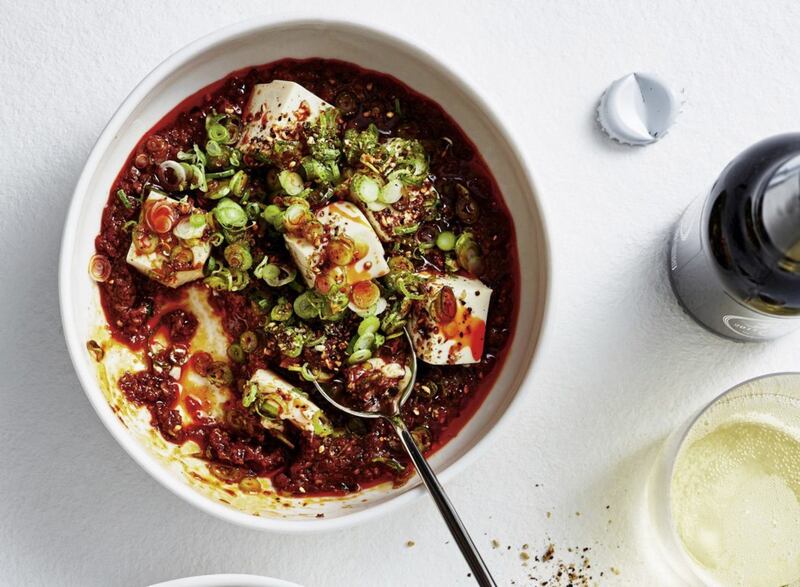
TUNA MAPO TOFU
(Serves 6)
1tbsp Sichuan peppercorns
190g (6½oz) fresh ginger, peeled
190g (6½oz) garlic cloves, peeled
10 French shallots, peeled
375g (13oz) doubanjiang (fermented broad bean paste)
300ml (10 fl oz) grapeseed oil
80ml (2½ fl oz or 1/3 cup) shaoxing rice wine
50g (13/4 oz) caster (superfine) sugar
125ml (4 fl oz or ½ cup) tamari
1tbsp sesame oil
1.8kg (4lb) minced/ground tuna
200g (7oz) silken tofu, cut into small cubes
1 bunch spring onions (scallions), finely sliced
40g (1½ oz or ¼ cup) toasted sesame seeds
1 dried red chilli, finely sliced (optional)
Steamed short-grain rice, to serve
Method:
1. Toast the Sichuan peppercorns in a dry frying pan until fragrant, then use a mortar and pestle to grind to a rough powder. Set aside.
2. Place the ginger, garlic, shallots, doubanjiang and 150ml (5 fl oz) of the grapeseed oil in a food processor and blitz to a smooth paste.
3. Heat 100ml (3½ fl oz) of the remaining grapeseed oil in a large heavy-based saucepan over a high heat. Add the paste and fry, stirring occasionally, for eight to 10 minutes until dried and fragrant, then reduce the heat and simmer for a further 15 minutes, until the rawness from the vegetables has been completely cooked out. Stir in the shaoxing wine, sugar, tamari and one-third of the ground Sichuan peppercorns, then spoon the mixture into a large bowl.
4. Wipe out the pan, add the sesame oil and remaining two-and-a-half tablespoons of grapeseed oil and heat over a high heat. Working in two batches, add the tuna mince to the pan and fry for two minutes, or until the mince is coloured and has separated into individual strands, then stir through the fried paste mixture to combine.
5. To assemble the mapo tofu, return the tuna mixture to the saucepan and warm through over a low heat. Add the tofu, cover with a lid and heat for three minutes, then spoon into serving bowls. Top with the spring onion, sesame seeds, chilli, if using, and the remaining ground Sichuan peppercorns.
6. Serve with steamed rice, if you like.
